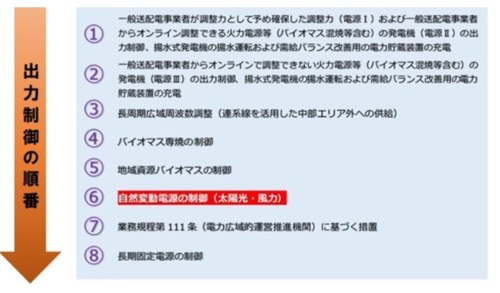Spring is the season for renewable energy. When photovoltaic power plants are operating at full capacity, power supply during the day exceeds demand, triggering output control. This April, the Chubu area was finally implemented for the first time in the three major metropolitan areas, and the Tokyo area was also close to the limit. However, in Europe and the United States, it is mainstream not to control the output. This is because the “negative price” in the electricity market functions as a signal for supply and demand adjustment.

Saturday, April 8th. Chubu Electric Power Grid, a general power transmission and distribution operator in the Chubu area, implemented "output control" for the first time in the three major metropolitan areas ( ).
The target time period was 8 hours from 8:00 to 16:00, and the output control amount of renewable energy was 0.4 MW as a preliminary figure. The output control will continue on the following day, the 9th (Sunday), and according to reports, there is a possibility that it will continue on weekends. According to another report, the amount of output control on the 9th was as large as 593,000 kW, with a breakdown of about 1,400 cases of solar power generating 586,000 kW and nine cases of 08,000 kW for wind power.
Output control is a mechanism in which power generation companies are requested in advance to curtail power generation in areas under the jurisdiction of general power transmission and distribution companies when it is expected that the balance of power supply and demand will collapse and, in the worst case, a power outage will occur. . In accordance with the "priority power supply rule", the order of suppression is determined by the type of power generation.
Output control in the Tokyo area is also a matter of time
Output control began in 2018 in the Kyushu area, where photovoltaic power generation spread early, and then spread mainly in western Japan, such as Chugoku and Shikoku. By fiscal 2022, it will also be held in Hokkaido, Tohoku, and Okinawa, and this fiscal year, Chubu and Hokuriku will continue on the same weekend in April. Tokyo and Kansai, where demand is high in metropolitan areas, have not yet implemented.
However, the Tokyo area seems to be approaching its limits. At a government expert meeting at the end of February, TEPCO Power Grid (PG) explained, "Currently, the supply and demand balance in the Tokyo area during the Golden Week period in 2023 is expected to secure a certain amount of margin for reduction." It announced the prospect of somehow avoiding output control. On the other hand, it says, "In preparation for the risk of excess supply capacity due to equipment troubles that are rarer than usual, we will prepare to control the output of renewable energy power sources as an insurance policy."
The reason why TEPCO PG was already considering GW support as of the end of February was that there was a spot price of 0.01 yen/kWh during GW last year even in the Tokyo area (Graph 1). From January to March, as mentioned in the previous article , the spot market will be unseasonably low. This is probably because the phenomenon was seen in the Tokyo area as well.
For that reason alone, the scale of power surpluses in this year's GW could be far greater than last year's.
One of the factors that cause this phenomenon is the "FIT transmission and distribution purchase system." Under this system, FIT-certified power generation companies do not need to create and submit their own power generation plans. Power transmission and distribution companies in each area purchase all of the FIT-derived power such as solar power generation at a predetermined FIT price and sell it to the wholesale power market. The difference between the FIT price and the market price is covered by the renewable energy levy borne by the consumer.








